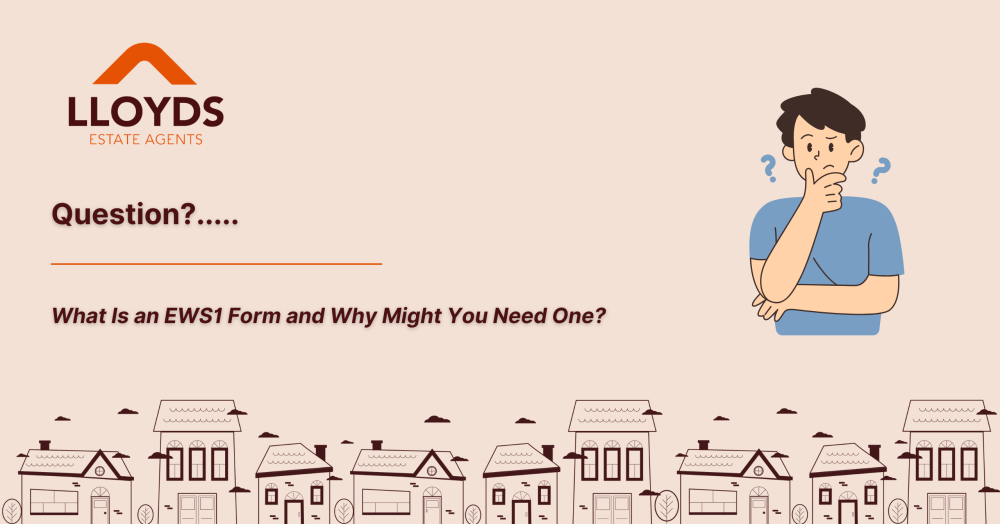An EWS1 form confirms the fire safety of a building’s external walls. Introduced after the Grenfell tragedy, it’s often required by mortgage lenders for flats in taller buildings or those with cladding, helping assess potential fire risks and impact on property value.
Understanding the EWS1 Form: What It Is and Why It Matters for Mortgages
In the wake of several high-profile fire safety concerns in the UK, particularly following the Grenfell Tower tragedy in 2017, building safety has become a critical focus in the property market. One outcome of this heightened scrutiny is the introduction of the EWS1 form — a key document for assessing the fire safety of a building's external wall system.
What Is an EWS1 Form?
The EWS1 (External Wall System) form is a standardised certificate used to record the findings of a fire risk assessment on the external wall materials of residential apartment buildings. It was introduced in December 2019 by the Royal Institution of Chartered Surveyors (RICS), in collaboration with lenders and fire safety experts.
The form provides a clear statement on whether a building's external wall system — including cladding, insulation, balconies, and other attachments — has been assessed for fire risk and whether remedial work is required.
Why Was the EWS1 Introduced?
The tragic Grenfell Tower fire exposed serious deficiencies in the way external wall systems were designed and managed, particularly with the use of combustible cladding and insulation materials. This prompted widespread concern about fire safety in multi-storey residential buildings across the UK.
As a result, lenders became increasingly cautious when approving mortgages for flats in buildings with potentially unsafe cladding. However, there was no consistent way to assess and record the fire risk of these buildings — which led to uncertainty, delays, and, in some cases, sales falling through.
To resolve this, the EWS1 form was introduced as a consistent and trusted mechanism to confirm whether a building had been assessed and, crucially, whether it posed a material fire risk that would impact a property’s value or mortgage-ability.
When Is an EWS1 Form Required?
An EWS1 form is not a legal requirement, but it is often requested by mortgage lenders when:
The building is 18 metres or more in height (approximately 6 storeys).
The building is under 18 metres, but there are concerns about the materials used in its external walls (e.g. cladding, timber balconies).
The flat is in a multi-storey, multi-occupancy building and the valuer has flagged potential fire safety risks.
It’s important to note that an EWS1 form applies to the whole building, not just to individual flats. Therefore, it is usually the responsibility of the building owner or managing agent to arrange for the inspection and provide the completed form.
Why Do Lenders Care?
Mortgage lenders need to be confident that the property they are lending against is safe and maintains its value. If a building is deemed at high risk of fire due to unsafe cladding or other external materials, this could lead to expensive remediation works, insurance issues, or even evacuations — all of which could devalue the property.
Without an EWS1 form, or with an unfavourable one, lenders may:
Refuse the mortgage outright.
Reduce the amount they are willing to lend.
Require fire safety improvements before approving a loan.
This has had a major impact on the leasehold flat market, particularly for properties built or refurbished in the last 20 years.
Recent Changes and Clarifications
In 2021, the UK Government and RICS clarified that not all buildings require an EWS1 form, especially those under 18 metres without certain types of cladding. However, lender policies vary, and some still request the form even when it's technically not necessary.
Further reforms are ongoing to simplify fire safety assessments and reduce the burden on leaseholders, including moves toward a proportionate approach to risk and an increased number of qualified professionals who can complete EWS1 assessments.
Final Thoughts
The EWS1 form has become a crucial part of the post-Grenfell property landscape in the UK. While it was introduced to bring clarity and consistency to fire safety assessments, it has also introduced complexity into the home-buying process for some. If you're buying, selling, or remortgaging a flat in a residential block, it's worth checking early whether an EWS1 is required — and whether one is already in place — to avoid delays and complications down the line.

